Types of Anemometer (All Types, Advantages and Disadvantages of each, Applications)
There is a wide range of anemometers for measuring wind and air velocity; some types are widespread, while others are rare. Anemometers can be classified basically as the velocity anemometer or the pressure anemometer. In this article, we want to examine the types of anemometers in both classifications. The eight common types of anemometer are:
- Cup Anemometer
- Vane Anemometer
- Hot-Wire Anemometer or Thermal Anemometer
- Laser Doppler Anemometer
- Ultrasonic Anemometer
- Windmill Anemometer
- Ping-pong Ball Anemometer
- Pressure Anemometer
We currently have these products in stock under the anemometer category. View Our Inventory Online!
Cup Anemometer
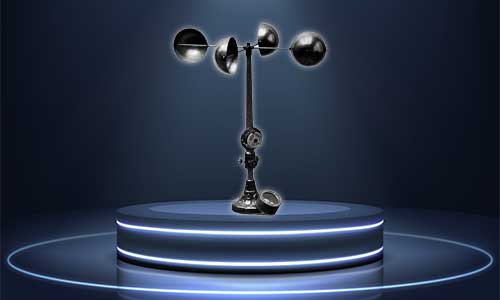
This model of anemometers is the oldest form, and they have been used for centuries. Cup anemometers are the most common and simple type of anemometer. They provide the most accurate result and are highly reliable and rugged.
This anemometer consisted of four cups attached to horizontal arms mounted on a vertical shaft. The airflow passes through the cups in a horizontal direction making the shaft turn at a speed approximately proportional to the wind speed by counting shaft rotations over a specific period of time. Meteorologists, scholars, and educational institutions use cup anemometers for scientific and commercial aims.
How To Make Your Own Cup Anemometer
A Cup anemometer is an instrument that measures wind speed and wind pressure. To make it, you need a cup, cardboard, scissors, straw, stapler, skewer stick, and plasticine.
- Cut two cardboard strips.
- Make a cross and staple
- pierce a hole in its center
- Staple up to the end of the cardboard arm
- Repeat on all four arms. Ensuring all cups are facing the same direction
- Place a skewer through the hole about 1cm
- Put plasticine over the skewer so it stays in place
- Place straw over the skewer to make movement
- Now it is time to go outside and test your anemometer.
Cup Anemometer Advantages And Disadvantages
Advantages
- Large wind measurement range
- High strength
- Corrosion resistance
- Low cost
- Available in a variety of materials to choose from, such as aluminum alloy anemometer and polycarbonate anemometer
- It doesn’t require pointing toward the source to sense the wind speed
- Simple and robust construction
- The simplicity of speed measurement
- Low maintenance requirements
Disadvantages
- The starting velocity of the anemometer is sometimes very high
- Low measurements are not very well examined.
- In turbulent conditions, the cup anemometers can underrate the wind speeds.
- The rotating parts wear out with use over time.
- Generally, sensitive to icing effect.
Cup Anemometer Application
- Suitable for gathering the climate statistics
- Meteorologists
- Educational institutions
- Researchers
- Commercial use
Vane Anemometer
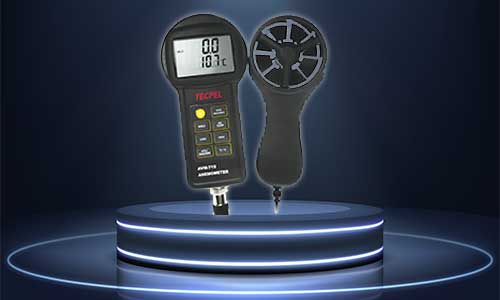
Vane anemometers are much more accurate than cup anemometers. They determine wind velocity and volumetric flow using the impeller anemometer or turbine. Generally, these small handheld tools comprise a turbine and a digital screen.
They provide a similar mechanism to the cup design, but instead of cups, they have spinning wind blades. Vane anemometers need to be parallel to the direction of the wind and rotate about a horizontal axis to get accurate data. These anemometers count the number of spins per second to determine wind speed, with the results displayed on a digital display.
Vane Anemometers operate on the principle that the wind blade of the anemometer should always be aligned with the wind's speed. Therefore, its sensing part has to be compatible with the wind direction. If the device calibrates, the speed of the rotating vane is converted into electric power, and then it displays a wind speed measurement.
Vane Anemometer Advantages And Disadvantages
Advantages
- Withstand in the harshest and dirtiest environment
- More rugged and durable than other anemometers
- Vane anemometers can control higher wind speeds
- Used outdoors and indoors
- Compact and used in handheld devices
- Measure other atmospheric parameters besides wind speed
- Easy to use and extensive
- Corrosion-resistant
Disadvantages
- The vane anemometer has to be in the wind direction.
- Higher starting velocity with smaller vanes
- The rotating parts wear out with use over time.
- Due to the cold weather conditions, some parts of the blade and fuselage often freeze and can not operate normally. So, it provides big problems in the actual weather observation work and creates a long-term lack of weather data.
Vane Anemometer Applications
- HVAC Monitoring
- Measuring hoods and airflow equipment
- Water treatment plants
- Exhaust monitoring
- Education
Hot-Wire Anemometer
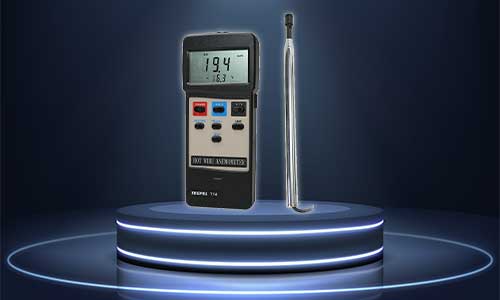
Hotwire, thermal or constant current anemometers can measure pressure and the wind speed and convert flow velocity signals into electrical signals. Their mechanism is based on the principle of heat transfer.
They have two probes with a thin wire stretched between them. The device sends an electric current through the thin wire that makes the wire hot to a specific temperature.
As the wind flows over the wire, heat transfers to the air and the wire loses temperature and cools down. Then the anemometer determines the velocity and direction of the wind by measuring the heat loss of the wire placed in the wind stream.
In hot wire anemometers, the wind will have a cooling effect on the wire. These anemometers measure the rate of cooling by either the constant current or the constant temperature configurations.
In the constant current mode, a current will heat the wire. The wind flow will change the temperature of the heated wire. Since the temperature is proportional to the wind flow rate, the anemometer can measure wind speed from this constant current method. Exposure of the heated wire to airflow will alter the temperature. In this mode, there is a danger of burning the wire.
In Constant temperature mode, the hot wire anemometers maintain the wire at a constant temperature. The device must pull more current to keep the temperature steady because the wind flow decreases the wire's heat. Then, the device will determine the current pull needed to maintain a constant temperature to measure wind speed.
How To Measure Air Velocity Within a Duct Using The Velocity Probe
The final goal of each duct system is to move the volume of the required air while maintaining other factors within the acceptable range, and present it in values and patterns that provide the determined purpose, such as heating, cooling, ventilating, exhausting, mixing, humidifying, dehumidifying, or otherwise air conditioning within a space.
Both applications and how the duct is designed are used to determine velocity within a duct. Duct systems are designed based on key factors: the level of available static pressure that the fan can overcome because of friction losses and pressure drops of devices within the airflow; the available space for ductwork; and permissible noise levels.
Technicians use a duct traverse to determine the air volume conveyed to all downstream terminal instruments. The duct traverses can measure the air volume in each duct by multiplying the average velocity value by the internal area of the duct.
In the main ducts, the traverses measure the total air volume of the system, which is very important for the performance of the HVAC system, efficiency, and life expectancy. The outdoor air volume results from the difference in air volumes between the main supply duct traverse and the main return duct traverse.
A traverse in outputs is the most accurate way to determine the air volume transferred by the terminal device. A traverse in exhaust ducts presents exhaust air volume.
A duct traverse is made of several air velocity measurements at regular intervals at the cross-sectional area of a straight duct.
It is better to locate the traverse in a straight part of the duct with ten straight duct diameters upstream and three straight duct diameters downstream of the traverse plane. Also, a minimum of five duct diameters upstream and one duct diameter downstream can provide satisfactory results.
The number of measurements performed across the traverse plane is determined by the size and geometry of the duct.
To access the traverse points in the telescoping anemometer probe, technicians often make five to seven openings on one side of the rectangular ducts and two to three openings in round ducts.
Hot Wire Anemometer Advantages And Disadvantages
Advantages
- Long operation life than other anemometers due to having no rotating parts
- They have a low starting threshold
- Their reading is error-free with high accuracy
- Quick response
- Small in size
- Portable and easy to operate
- No specific software is required
- Wind measurement indoors
- Volume flow measurement is possible
- Measurement of air temperature in some cases
- Analysis and image documentation, in some cases
Disadvantages
- Not appropriate in areas where the temperature fluctuates rapidly
- Large particles and dirt in the air can damage a hot wire anemometer, so this type of anemometer is not suitable for a dirty environment.
- This anemometer is expensive.
Thermal Anemometer Applications
- Air conditioning and ventilation measurements
- Indoor environments
- Check and control HVAC systems, flow hoods, and exhaust systems
- Air conveyors, clean rooms, air velocity
Laser Doppler Anemometer
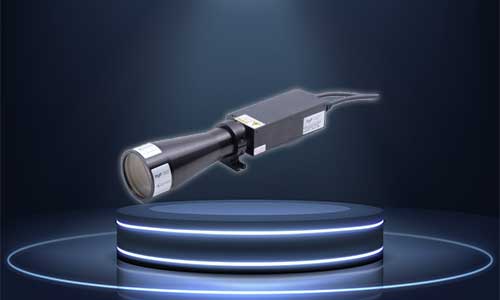
Also known as Laser Doppler Velocimetry (LDV), the laser Doppler anemometer is one of the most effective anemometers. It uses the Doppler Effect, an excellent and reliable method for measuring wind velocity and turbulence distribution in both free and internal flows.
When a narrow beam of light focuses on a motionless object, the beam will return to the anemometer. But in the case of moving objects, the frequency will change, and the transmitted signal will be different. This difference in frequency or Doppler shift measures the object's velocity.
This device can determine even the slightest changes in the wind flow. It sends a beam of light which further splits into two beams. When one of the two beams enters the anemometer, the amount of light that the moving air particles have scattered determines the wind speed.
Laser Doppler Advantages And Disadvantages
Advantages
- The device does not disturb the fluid’s path during the measurement
- direct measurement of velocity
- Appropriate for measurement in contaminated or reversed flow environments
- they do not need to be calibrated
- Highly accurate
- Suitable for flow measurement of both gasses and liquids
Disadvantages
- Need Transparent Channels
- Not appropriate for use on clean flows
Laser Doppler Applications
- Wind tunnel studies
- Blood flow measurement
- Determining wind velocity
- Suitable for high-tech applications such as jet engines and river hydrology
- Utilized in the field of combustion
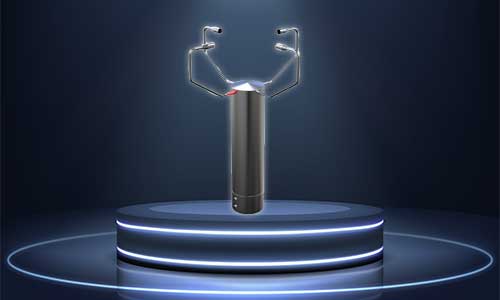
Ultrasonic Anemometer
An ultrasonic or sonic anemometer is the most advanced type compared to the other anemometers. The device uses ultrasonic sound waves to determine the wind velocity. Unlike other anemometers, the ultrasonic operates without moving parts.
The anemometer sends a pulse of sound waves from the North-facing side of the sensor. A microprocessor measures the time of flight it takes to move to the south transducer. The wind speed is measured from the time it takes the sound waves to travel between transducers.
Measurement times are influenced by the speed and direction of the wind moving along the line between the transducers. When there are no moving parts, measurement is quick and precise. This anemometer can be designed as two-dimensional or three-dimensional and is better suited for navigation and aviation purposes.
Ultrasonic Anemometer Advantages And Disadvantages
Advantages
- Weather resistant and suitable for working in extreme weather conditions
- Significantly less likely to affect by icing
- Excellent temporal resolutions of 20Hz or more
- Have no moving parts, so better constancy than a cup and vane, no mechanical wear and inertia and blockage
- Fast response, the minimum detection wind speed measurement can get to a few centimeters per second.
Disadvantages
- Prone to birds sitting on the probes, which can cause difficulty, resulting in high false wind gusts
- Very expensive, and so it’s pretty rare than other types of anemometers
- Complicated installation
Application of Ultrasonic Anemometer
Ultrasonic anemometers help on many occasions, including in mines, forests, weather monitoring, etc. This wind speed sensor is a low-cost, high-precision, high-stability device. Ultrasonic anemometers provide data to people in many places and also guarantee safety. Their applications are:
- Aircrafts
- Scientific wind turbines
- Automated weather stations
Application of Ultrasonic Anemometer In Railway
Ultrasonic anemometer provides accurate and reliable wind speed and wind direction data to ensure the safety of train operation and railway transportation in windy regions. The device is established in railway stations and railways in different areas to monitor wind speed, alert in real-time, and direct the trains.
Application of Ultrasonic Anemometer in Mineral Production
The working conditions of mines are specific, and the working environment is complicated. Therefore, measuring wind speed is an essential factor in mine safety. An ultrasonic anemometer can monitor the mine wind speed and determine the safety parameters of mine ventilation. It provides a real-time display of the wind speed and air volume to ensure the safety of personnel and property and safe production in mines.
Windmill Anemometer
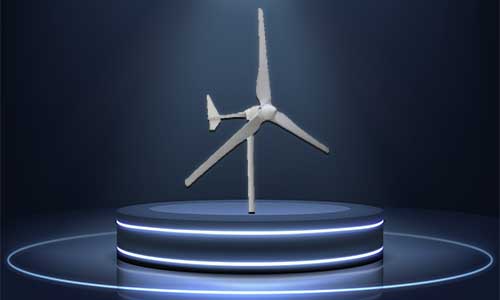
A windmill anemometer is another type of anemometer. This mechanical device is the same as an ordinary windmill with an axis parallel to the wind direction. It measures both wind speed and direction. Since the direction of the wind is not constant to help the axis to change direction, the anemometer must use a wind aerovane or some other tool to achieve this goal. It has a propeller and a tail placed at the front of the unit to measure wind speed and direction. In this type of anemometer, the air measurement is based on the readings of dials at the beginning and end of a measured period. For measuring airspeed in an otherwise unreachable area, windmill instruments may contain an extension handle to create a form of remote control.
Windmill Anemometer Advantages And Disadvantages
Advantages
- Appropriate for heavy-duty purposes
- lasts longer
- Made ruggedly
- Ability to handle high wind speeds
Disadvantages
- The moving parts of the unit may damage over time.
- If the vanes of the anemometer are small, it can make a high starting speed.
- The anemometer should be in the wind direction to get accurate readings.
Pressure Anemometer
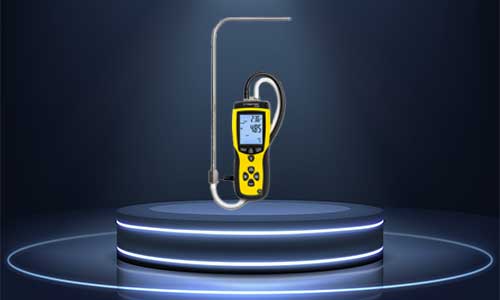
A pressure anemometer is a device for measuring the pressure of the wind. This device provides the wind's direction and speeds via a higher tube that rises off the ground. The difference between the total pressure of the wind and the static pressure indicates the wind speed. The use of this type of anemometer is mainly in airports. The design of anemometers that measure the pressure falls in 3 categories:
Plate Anemometers
The first modern type of anemometer is a plate anemometer that measures the wind speed by displacing a spring attached to a solid plate exposed to the wind. The spring balances the pressure of the wind on its face. The pressure exerted by the wind on a plate is determined by the compression of the spring, and a recorder or a gauge presents the result. These anemometers are suitable for gusty winds and do not respond to light winds. Plate anemometers show high wind alarms on bridges.
Tube Anemometers
A pressure tube anemometer also called a windsock, is designed for relative wind speed measurements. The tube anemometer is made up of tube shapes connected to wires. When the wind blows, it reaches the larger end of the tube. So, the larger end of the sock moves into the wind and determines the direction of the wind. If the wind blows faster, the tube flows higher to the ground level and provides the readings. Tube anemometers find use around airports.
Pitot Tube Anemometer
The most common type of pressure anemometer is the Pitot tube which employs a unique process for measuring the wind speed. This digital device has a tube attached to it. The tube is placed into a duct which converts the pressure into a wind speed reading. The device operates based on an air pressure gradient principle by determining the pressure or pressure difference and using this value to measure the speed. Pitot Tube anemometers are suitable for measuring the pressure of the very high wind speed and velocity and offer a fast response. They have no rotating parts, so there is no mechanical wear. They are not suitable for regions with highly fluctuating wind flow and locations with low air velocity.
A pitot tube consists of two holes, the front hole placed in the front to measure the stagnation pressure and the other along the sides to measure the static pressure. Once the air enters the tube, it cannot flow further because it doesn’t have an outlet. The device contains a diaphragm inside the tube, which allows it to measure static and stagnation pressure separately. Static pressure is measured when the air enters the tube, but stagnation pressure or total pressure is measured when the air comes to rest. Finally, the difference between static and stagnation pressure shows the airflow velocity.
Pitot tube Anemometer Advantages And Disadvantages
Advantages
- Suitable for measuring very high wind speed and velocity
- Relatively small in size, suitable for ductwork
- Have no moving parts, no mechanical wear
- Offers fast response
- For measurements in dusty, dirty ambient
Disadvantages
- Tools have to be pointed towards the flow of the wind
- Not appropriate for locations with the highly fluctuating wind speed
- Not suitable for low air velocity
Pitot Tubes Applications
- Ventilating ducts/pipes
- Aircraft
- Air conditioning and ventilation technology
- Weather stations
- Wind tunnel
- Mapping flow profile in a channel or duct
- Industrial machinery, boats, and also sports cars
Pressure Anemometer advantages and disadvantages
Advantages
- High stability
- Ideal for measuring the positive pressure, negative pressure, and also differential pressure of the gas within the pressure range of 3000Pa
- The measurement of wind speed and air volume
Ping-pong ball Anemometer
Ping pong ball anemometers are simple devices that mostly find use for middle-school level instruction. This device presents how wind speed can be measured using a force balance, and most students make it easy.
As its name suggests, a standard anemometer for easy use is made from a ping-pong ball connected to a thin string. When the wind flows horizontally against the ball, it presses on and displaces it; ping-pong balls are weightless, so they move effortlessly in light winds.
The wind speed is estimated by measuring the angle between the string-ball device and the vertical. This device is not precise compared to other anemometers, but it is suitable for learning about the concept of wind speed.
How to avoid measurement errors
Tips for the correct measurement
The specific task, the location, and the ambient conditions must be determined to measure flow velocity correctly. In particular, due to the measurement location, there are important parameters that must be considered in the measurement of flow velocity.
In an air duct
In the context of authentication measurements, indirect measurement methods (network measurement) are used to determine airflow.
For approval measurements, air flows are determined using indirect measurements (grid measurements).
In EN 12599 Standard, the following methods have been proposed: Trivia, centroidal axis, and log-linear.
The individual velocity measurements are used to measure the mean flow velocity; then, the air volume flow is calculated.
Tips for measuring in air ducts
For measuring flow velocity in ducts with a small cross-section, the guideline value uses: In circumstances that the flow-impacted area of the probe is more extensive than 1:100 relative to the free duct cross-section, the inserted probe causes problems in the flow behavior in the duct. Then the display increases to the ratio of the cross-section narrowing.
The selection of the measurement location is important: It should be better to keep the length of 10 duct diameters upstream of the probe and the depth of a probe and 4 to 6 diameters downstream of the duct without any disturbance and seal the measuring area well.
Robes must be turned in the duct to measure maximum velocity: The measurement value can be recorded only in this situation. The rotation of the main flow direction is significant when measuring with a Pitot tube.
At large air outlets
There is a high level of inaccuracy in measurement at duct outlets, and they are only appropriate for approval measurements. So, it is better to use them for estimation measurements. Large duct outlets with a 100 mm vane provide the best result. There are two options for this:
Multi-point measurement: A mean value is measured by addressing measurement points in a regular pattern at the whole duct cross-section.
Loop method: A timed arithmetic mean value is measured when the probe moves incrementally over the entire area of the grid.
Tips for measuring at air duct outlets
Observe distance from outlet: Maintaining a distance of 3 to 5 cm to the outlet is vital in the measurement.
Avoid uneven movements of the vane: Measurements should be carried out several times. For example, once the probe moves in vertical loops and once it moves in horizontal loops.
Effects on the airflow caused by the vane and the person measuring: Resistance of the flow impacts the measurement results. So, a large van with a telescope is used to situate only the vane probe in the flow profile.
At inlets or outlets of plate valves and ventilators
Measuring airflow velocity and measuring volume flow at ventilation outlets can be challenging.
The correct measurement can be more difficult due to turbulence created there and differing flow directions.
Flow velocity measurement at ventilation grilles and plate valves can be done easily and accurately using a funnel with a vane anemometer or a vane probe.
Tips for measuring at plate outlets and ventilators
The funnel should be placed entirely on the plate valve or the ventilator.
A straightener should be used for measurements at so-called swirl outlets with a high degree of drift to get noticeably better straight-flow results.
Practical Examples of Flow Velocity Measurement
The measurement's location and relevant environmental conditions should be considered to select a suitable instrument for calculating the flow velocity. Five measurement locations can be distinguished in measuring flow velocity; we mention just 3 of them.
Air duct: low flow velocity
- Suitable for flows up to 5 m/s and clean air
- High accuracy in the low flow velocity range
Air duct: medium flow velocity
- Suitable for flow velocities up to 40 m/s, clean air, and temperatures up to 70 °C
- It is not comparatively prone to the correct rotation from the right flow direction.
Flow speed up to 200 m3/h at air inlets/outlets.
- Combines the flow velocity over a bigger area, which is an average of the disturbance created by the grille.
Tap here to get more information about anemometer:
What is The Use of Anemometer; Details You Need to Know About Wind Meter
Everything About Top 3 Anemometer Manufacturers in UAE
Choosing The Right Anemometer | A full Buying Guide
Anemometer: Basics And Fundamentals
Recent Posts
-
Booster Pump Troubleshooting and Maintenance: How to Fix and Prevent Common Issues
1. Introduction Imagine turning on your faucet only to be greeted with a weak trickle of water when …22nd Apr 2025 -
Energy-Efficient Booster Pumps: Selection and Tips for Maximizing Performance
1. Introduction Imagine never having to deal with fluctuating water pressure, noisy pumps, or skyroc …19th Apr 2025 -
Booster Pumps for Sustainable Water Systems: Irrigation and Rainwater Harvesting Solutions
1. Introduction Water scarcity is no longer a distant threat—it’s a reality affecti …16th Apr 2025




